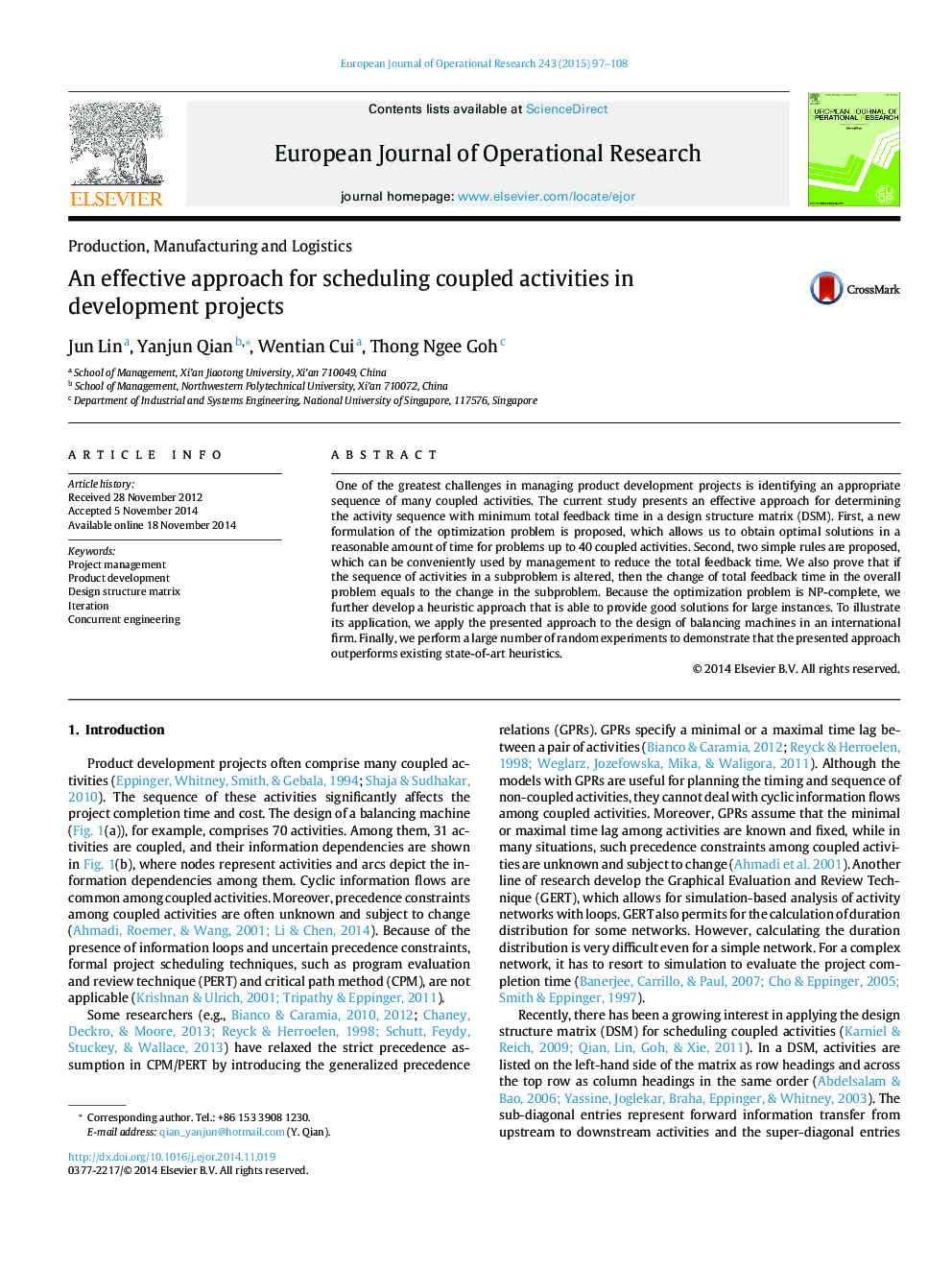| Article ID | Journal | Published Year | Pages | File Type |
|---|---|---|---|---|
| 479631 | European Journal of Operational Research | 2015 | 12 Pages |
•Focusing on determining the activity sequence with minimum total feedback time in a DSM.•NP-complete optimization problem.•A new formulation of the optimization problem is proposed, which allows obtaining optimal solutions in a reasonable amount of time for problems up to 40 coupled activities.•Two simple rules for reducing the total feedback time, which can be conveniently used by management.•A heuristic approach that is able to provide good solutions for large instances.•The usefulness of the approach has been validated through case study, computer experiments and benchmark analysis.
One of the greatest challenges in managing product development projects is identifying an appropriate sequence of many coupled activities. The current study presents an effective approach for determining the activity sequence with minimum total feedback time in a design structure matrix (DSM). First, a new formulation of the optimization problem is proposed, which allows us to obtain optimal solutions in a reasonable amount of time for problems up to 40 coupled activities. Second, two simple rules are proposed, which can be conveniently used by management to reduce the total feedback time. We also prove that if the sequence of activities in a subproblem is altered, then the change of total feedback time in the overall problem equals to the change in the subproblem. Because the optimization problem is NP-complete, we further develop a heuristic approach that is able to provide good solutions for large instances. To illustrate its application, we apply the presented approach to the design of balancing machines in an international firm. Finally, we perform a large number of random experiments to demonstrate that the presented approach outperforms existing state-of-art heuristics.
